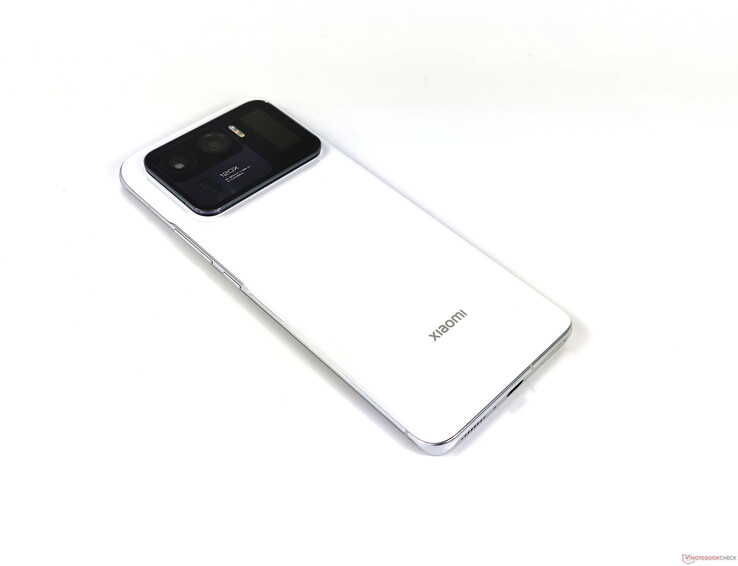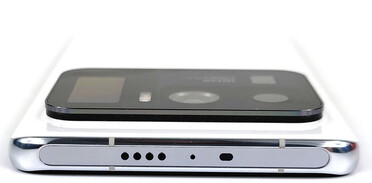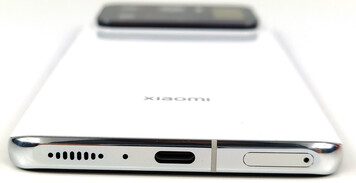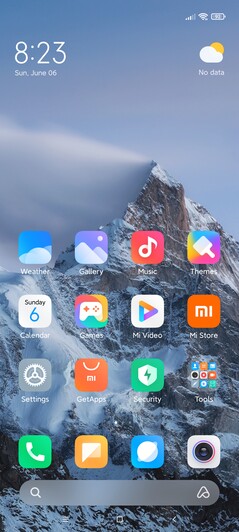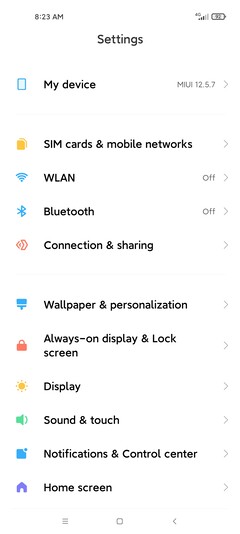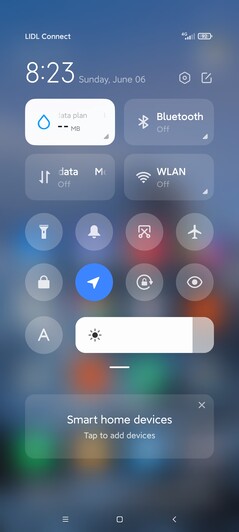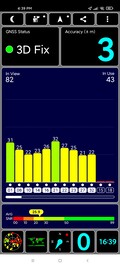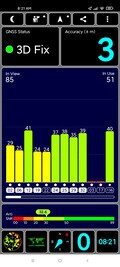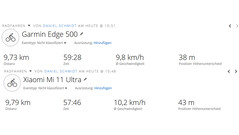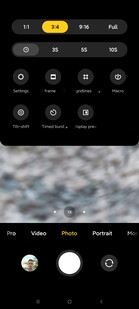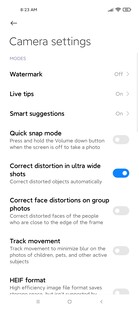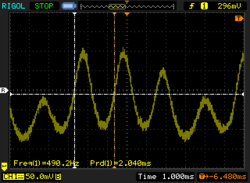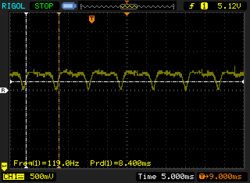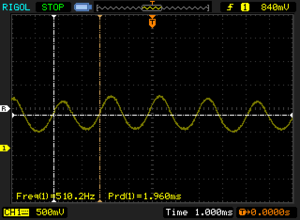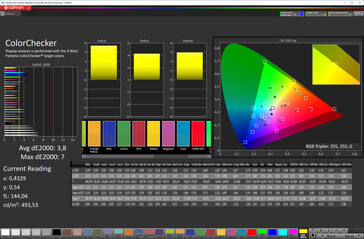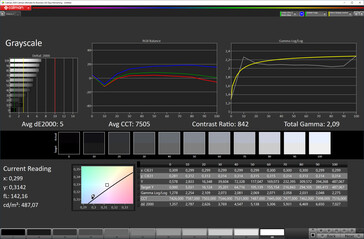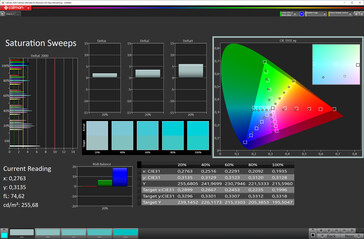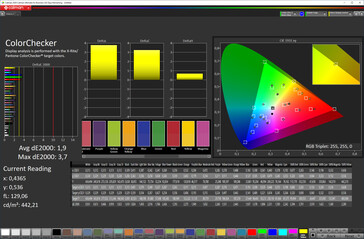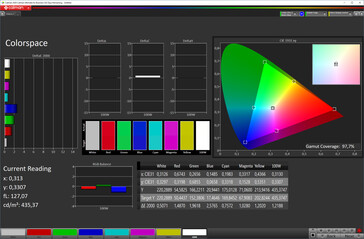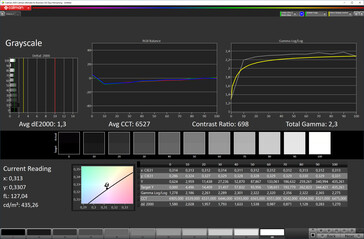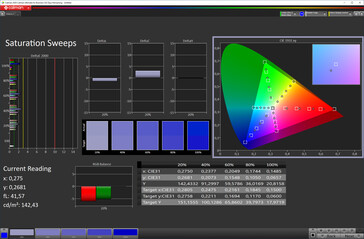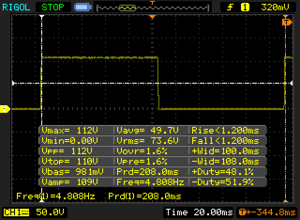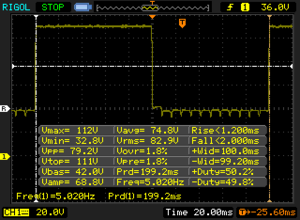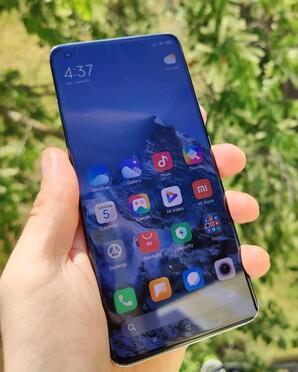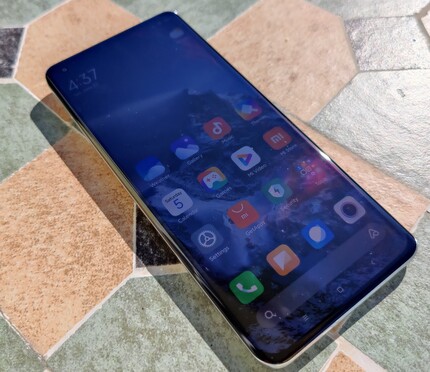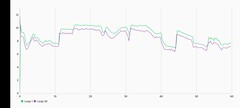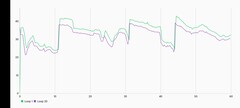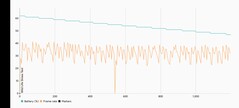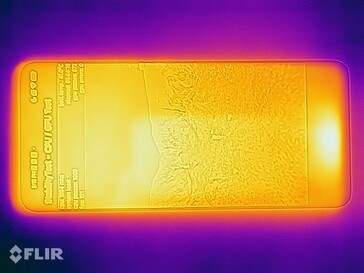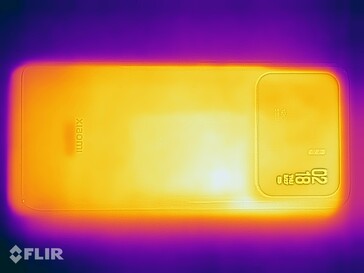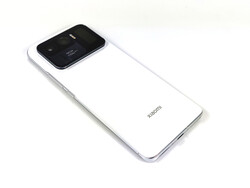Xiaomi Mi 11 Ultra Review - A true heavyweight in the smartphone space
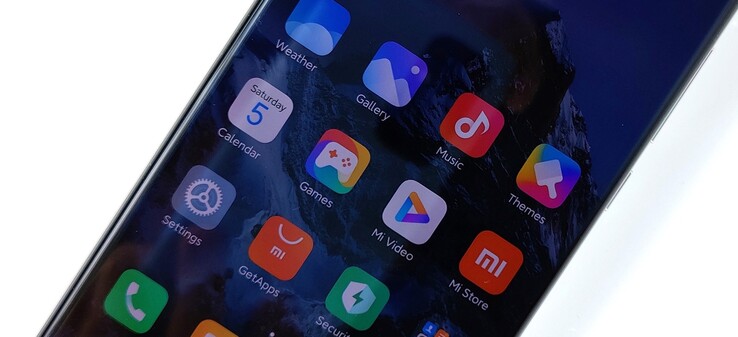
The Xiaomi Mi 11 Ultra, which turned out to be a huge hit in China, packs the best hardware that is currently available in the smartphone market. Thanks to the largest camera sensor to ever be featured in a smartphone, the Mi 11 Ultra’s camera gets the highest DXOMARK score at this point in time.
The rest of the specifications sheet also looks very impressive. This is why the Mi 11 Ultra costs about as much as the Galaxy S21 Ultra—at least in Europe. In Germany, the version with 12 GB of RAM and 256 GB of UFS 3.1 memory has an MSRP of 1200 Euros (~$1453). The Mi 11, which launched in December, costs 400 Euros (~$484) less. Buyers can save a lot of money by importing the Mi 11 Ultra from China. For instance, TradingShenzhen sells the Chinese version of the Mi 11 Ultra for just 830 Euros (~$1005). TradingShenzhen lent us the Chinese version of the Xiaomi Mi 11 Ultra for this review.
Likely Competitors
Rating | Date | Model | Weight | Drive | Size | Resolution | Price |
|---|---|---|---|---|---|---|---|
| 89.2 % v7 (old) | 06 / 2021 | Xiaomi Mi 11 Ultra SD 888 5G, Adreno 660 | 234 g | 256 GB UFS 3.1 Flash | 6.81" | 3200x1440 | |
| 90.4 % v7 (old) | 02 / 2021 | Samsung Galaxy S21 Ultra Exynos 2100 5G, Mali-G78 MP14 | 227 g | 128 GB UFS 3.1 Flash | 6.80" | 3200x1440 | |
| 88.6 % v7 (old) | 06 / 2022 | OnePlus 9 Pro SD 888 5G, Adreno 660 | 197 g | 256 GB UFS 3.1 Flash | 6.70" | 3216x1440 | |
| 86.4 % v7 (old) | 06 / 2021 | ZTE Axon 30 Ultra 5G SD 888 5G, Adreno 660 | 188 g | 128 GB UFS 3.1 Flash | 6.68" | 2400x1080 | |
| 88 % v7 (old) | 04 / 2021 | Asus ROG Phone 5 SD 888 5G, Adreno 660 | 239 g | 256 GB UFS 3.1 Flash | 6.78" | 2448x1080 |
Case - Xiaomi smartphone with a hole-punch display
The Mi 11 Ultra is made of glass and ceramic. It comes in the two following colour schemes: White and Black. However, OnePlus offers colourful variants of its flagship, the 9 Pro. The Mi 11 Ultra has an IP68 certification.
The Mi 11 Ultra feels very premium in the hand, in large part because it weighs 239 g (0.53 lbs). The Xiaomi smartphone is quite heavy and is not particularly easy to handle. The junctures where the front glass and the ceramic back meet the metal frame are very smooth. The smartphone feels like a solid piece.
The 6.81-inch screen is protected by Gorilla Glass Victus. All four corners of the curved OLED panel are rounded. The display has very small bezels. The screen-to-body ratio of the Xiaomi Mi 11 Ultra amounts to 91.4%. The Xiaomi Mi 11 has the same screen-to-body ratio.
The most noticeable design element of the Mi 11 Ultra is the large camera bump with a secondary display. Whether users like this or not will come down to individual preference. The Xiaomi smartphone does not feel top-heavy
. What is more, it does not wobble when it lies on a flat surface.
Connectivity & Features - Mi 11 Ultra with an IR blaster
The most interesting feature of the Mi 11 Ultra is a secondary display, which is integrated into the camera module. The 1.1-inch OLED panel has a native resolution of 294x126 pixels. It can be used to display notifications or as a viewfinder for the main camera. With MiUI 12.5, Xiaomi brought Always-on-Display functionality to its smartphones.
The Mi 11 Ultra supports 5G dual SIM functionality. Thanks to USB On-The-Go functionality, users can connect external devices to the smartphone. Miracast, which enables seamless display of multimedia content over Wi-Fi, works without any issues. The Mi 11 Ultra features a USB-C port, which, unfortunately, operates at USB 2.0 speeds. There is also an IR blaster, which is why the smartphone can be used to control home entertainment devices.
The Android smartphone has 256 GB of UFS 3.1 memory. Only 225 GB is available to the user. The amount of storage space cannot be increased.
Software - Xiaomi smartphone with MiUI 12.5
The Mi 11 Ultra runs Android 11 (security patch level at the time of our review: April, 2021). The Xiaomi smartphone comes with a custom launcher known as MiUI (current version at the time of our review: 12.5).
Xiaomi’s custom launcher looks very nice and offers a lot of customisation options. In terms of design, Xiaomi’s Android skin bears a lot of resemblance to Apple’s iOS.
The EU version of the Xiaomi Mi 11 Ultra supports Google Play Services and comes with the Google Play Store preinstalled. However, the Chinese version does not support Google Play Services out of the box. Moreover, it does not even have the German language pack. Instead, it relies on Chinese alternatives such as Xiaomi’s own services. In any case, users can easily install Google Play Services after they purchase the device. However, some applications will not work because of the missing certifications.
Fortunately, there are no system advertisements on Xiaomi’s flagship smartphone—at least as far as the Chinese version is concerned. The Mi 11 also did not have any system advertisements. The Mi 11 Ultra supports the Camera2 L3 API. Widevine L1 is also supported, which is why users will be able to stream video in HD quality.
Communication & GNSS - Xiaomi Mi 11 Ultra with 5G
The Xiaomi smartphone features dual SIM functionality, a Bluetooth (5.2) module and an NFC chip for contactless payments. The Mi 11 Ultra supports Wi-Fi 6E and MIMO (VHT160) technology. The Mi 11 Ultra manages to achieve very high upload speeds. However, the download speeds were considerably lower with our reference-grade router Netgear Nighthawk AX12.
The Mi 11 Ultra comes with a 5G modem (Qualcomm X60). Potential buyers should be aware of the fact that the Chinese version of the Mi 11 Ultra does not feature a Play Protect certification, meaning that it does not work with Google Pay.
In addition to a wide array of 5G bands, the Xiaomi smartphone also supports 17 LTE frequency bands (all frequency bands relevant for Germany are supported by the Chinese version of the Mi 11 Ultra).
To determine how accurate our review device is when it comes to navigation, we take it with us on a bike ride. During this ride, we are also accompanied by the professional navigator Garmin Edge 500. There is only a 60-m (~197-ft) difference between the high-end Chinese smartphone and the Garmin Edge 500 at the end of our 10-km ride. The Mi 11 Ultra did not deviate too much from the professional navigator and had no trouble accurately mapping the route we took. This is why it is well-suited for navigation.
For geolocation, our review device relies on the following global navigation satellite systems: GPS (L1+L5), GLONASS, BeiDou (B1I+B1C+B2a) and Galileo (E1+E5a). Both outdoors and indoors, the user’s location is acquired very quickly. The Android smartphone has a margin of error of 3 m (~10 ft) when it comes to determining the user’s geographical location.
Telephony & Call Quality - Xiaomi smartphone with VoLTE
The call quality of the Mi 11 Ultra is on a very good level. Our call partner describes the quality of the microphone as very good—voices are reproduced very clearly.
The Xiaomi smartphone does not support eSIM functionality (at least in Europe). Only two physical SIM cards can be used. However, both Wi-Fi Calling and VoLTE are supported.
Cameras - Mi 11 Ultra only with a triple-camera system
The Mi 10 Ultra did very well in our camera test. With the Mi 11 Ultra, Xiaomi has upped its camera game once again. The Mi 11 Ultra features only a triple-camera system. However, the main sensor, which was made by Samsung, has a huge size (1/1.12 inches) for a smartphone. The pixel size is 1.4-μm, and the “super” pixel size is 2.8 μm (which is achieved through quad pixel binning).
Photographs taken with Samsung’s ISOCELL GN2 sensor look incredibly detailed and very colour-accurate. However, the dynamic range is not always optimal. Despite Samsung’s Dual Pixel Pro technology, the sharpness is not on a very high level—especially in the corners. The 50-MP image sensor reveals its true strength in low-light environments. The sensor captures a lot of detail even in the dark, and the shots are always properly exposed.
The Mi 11 Ultra offers 5X optical zoom and 120X digital zoom, thanks to its 48-MP Periscope lens. Thanks to optical image stabilisation, the Xiaomi smartphone produces usable images even when using 10X zoom. Images taken when using 5X zoom look surprisingly good as well.
The 12-mm ultra wide-angle camera has an impressive field of view of 128° and a 48-MP image sensor. This camera produces detailed and colour-accurate images, which are slightly blurry. However, photos shot with the ultra wide-angle lens appear realistic because of the minimal amount of sharpening that the Xiaomi smartphone applies, unlike most other competing smartphones. Howbeit, the corners of the ultra wide-angle photographs look quite blurry.
The main, ultra wide-angle and Percipoe cameras can record 8K video at 24 FPS. Those who want a higher frame rate can switch to 4K (up to 60 FPS) or 1080p (up to 1920 FPS). The smartphone also offers a night video mode, in which users can shoot 1080p video at 30 FPS. Switching between cameras when recording video is not possible.
The front-facing camera of the Mi 11 Ultra takes very good selfies. Thanks to a secondary display on the back, which can serve as a viewfinder, buyers can use the main camera to take extremely high-quality selfies—only in photo mode, at this point in time. The 20-MP selfie shooter should get an update in the future, which will allow users to record UHD video. The portrait mode will also be unlocked in a future update.
Image comparison
Choose a scene and navigate within the first image. One click changes the position on touchscreens. One click on the zoomed-in image opens the original in a new window. The first image shows the scaled photograph of the test device.
Wide angleWide angleLow-light photographyUltra-wide angle5X zoomWe use X-Rite’s ColorChecker Passport to further examine the colour accuracy of the 50-MP main camera. We take two photographs of the ColorChecker Passport, one under full studio lighting, and the other at 1 Lux.
Under controlled lighting conditions, most colours are well-reproduced. There are only some minor issues with the reproduction of the reds and some blue tones. The colours are also slightly overbrightened, which is a very common issue for smartphone cameras.
The photographs of our testing chart appear somewhat blurry in the corners.
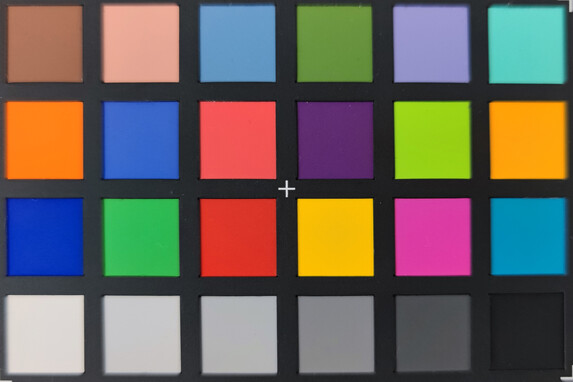
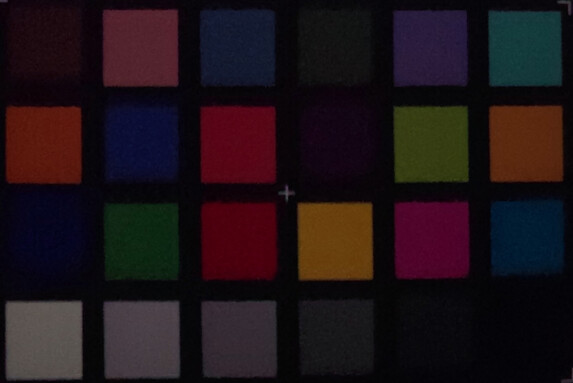
Accessories & Warranty - Xiaomi Mi 11 Ultra with a protective case
In addition to the smartphone itself, the box of the Mi 11 Ultra contains a modular 67-W charger, a USB cable, a transparent protective case, a SIM card removal tool and a USB-C to 3.5-mm headphone jack adapter. However, the Chinese version of the Mi 11 Ultra does not come with a charger this year.
The Xiaomi smartphone comes with a 12-month warranty. TradingShenzhen allows buyers to send the device to a German address if it breaks during the warranty period. This way Xiaomi can ensure faster shipping times to China.
Input Devices & Handling - Xiaomi smartphone with a 480-Hz touch sampling rate
The Mi 11 Ultra comes with a very high-quality vibration motor, which ensures very pleasant haptic feedback. Xiaomi’s flagship smartphone feels very responsive, thanks to the 120-Hz refresh rate and 480-Hz touch sampling rate. The touch layer of the display updates 480 times per second, which is why the screen feels so responsive.
The Mi 11 Ultra has an in-display fingerprint scanner. It unlocks the smartphone quickly. However, the OnePlus 9 Pro’s in-display fingerprint sensor is a little faster. The optical fingerprint reader is positioned very well. However, it is not very reliable—Xiaomi can improve the accuracy through a software update. The Mi 11 Ultra also supports facial recognition. The 2D face unlock works reliably and quickly. However, it is not secure.
Display - Mi 11 Ultra with a WQHD+ panel
The Xiaomi Mi 11 Ultra features a 6.81-inch OLED panel from Samsung. The display has a native resolution of 3200x1440 pixels and supports adaptive refresh rate technology. The refresh rate can fluctuate between 30 and 120 Hz, depending on the screen content. Here, the Samsung Galaxy S21 Ultra has a clear edge because it can reduce its refresh rate to 10 Hz and therefore save more energy.
The 10-bit panel of the Mi 11 Ultra has a very high brightness of 891 cd/m². The brightness is distributed very evenly across the screen. In our APL50 test, in which the screen displays a pattern that consists of evenly distributed dark and bright areas, the Xiaomi smartphone achieved 1252 cd/m², which is a very impressive result. Xiaomi claims that the Mi 11 Ultra can achieve a brightness of 1700 cd/m². We were unable to confirm this claim in our testing. However, the Mi 11 Ultra will probably be able to achieve a higher brightness in a 10% stimulus window (APL10). In any case, the Mi 11 Ultra offers enough brightness for HDR content.
For brightness control, the Mi 11 Ultra utilises pulse width modulation (PWM). Below 68% brightness, the screen flickers at a relatively high frequency of 455 to 510 Hz. Below 15% brightness, the frequency fluctuates between 138 and 490 Hz. At maximum brightness, the frequency amounts to 120 Hz. However, here the amplitude is very small. What is more, there is a DC dimming mode.
| |||||||||||||||||||||||||
Brightness Distribution: 99 %
Center on Battery: 891 cd/m²
Contrast: ∞:1 (Black: 0 cd/m²)
ΔE ColorChecker Calman: 1.9 | ∀{0.5-29.43 Ø4.77}
ΔE Greyscale Calman: 1.3 | ∀{0.09-98 Ø5}
99.8% sRGB (Calman 2D)
Gamma: 2.3
CCT: 6527 K
| Xiaomi Mi 11 Ultra AMOLED, 3200x1440, 6.8" | Samsung Galaxy S21 Ultra Dynamic AMOLED 2X, 3200x1440, 6.8" | OnePlus 9 Pro AMOLED, 3216x1440, 6.7" | ZTE Axon 30 Ultra 5G AMOLED, 2400x1080, 6.7" | Asus ROG Phone 5 AMOLED, 2448x1080, 6.8" | |
|---|---|---|---|---|---|
| Screen | -9% | 5% | -151% | -1% | |
| Brightness middle (cd/m²) | 891 | 910 2% | 733 -18% | 638 -28% | 789 -11% |
| Brightness (cd/m²) | 888 | 913 3% | 746 -16% | 641 -28% | 795 -10% |
| Brightness Distribution (%) | 99 | 98 -1% | 97 -2% | 93 -6% | 98 -1% |
| Black Level * (cd/m²) | |||||
| Colorchecker dE 2000 * | 1.9 | 2 -5% | 0.95 50% | 4 -111% | 1.4 26% |
| Colorchecker dE 2000 max. * | 3.7 | 3.1 16% | 2.01 46% | 14 -278% | 3 19% |
| Greyscale dE 2000 * | 1.3 | 2.2 -69% | 1.7 -31% | 7.2 -454% | 1.7 -31% |
| Gamma | 2.3 96% | 2.06 107% | 2.21 100% | 2.27 97% | 2.27 97% |
| CCT | 6527 100% | 6512 100% | 6591 99% | 7190 90% | 6596 99% |
* ... smaller is better
Screen Flickering / PWM (Pulse-Width Modulation)
| Screen flickering / PWM detected | 510 Hz | ≤ 68 % brightness setting | |
The display backlight flickers at 510 Hz (worst case, e.g., utilizing PWM) Flickering detected at a brightness setting of 68 % and below. There should be no flickering or PWM above this brightness setting. The frequency of 510 Hz is quite high, so most users sensitive to PWM should not notice any flickering. In comparison: 53 % of all tested devices do not use PWM to dim the display. If PWM was detected, an average of 8083 (minimum: 5 - maximum: 343500) Hz was measured. | |||
Our CalMAN analysis reveals very good colour and grayscale performance in Enhanced
mode. Furthermore, the colour temperature of 6525 K is very close to the ideal value (6500 K). Other colour modes are less accurate. The two colour spaces that we measured (sRGB, P3) are almost completely covered by the OLED panel.
The OLED panel of the Mi 11 Ultra can achieve perfect blacks because each pixel can be completely switched off. This is why the contrast ratio tends to infinity. The Mi 11 Ultra is a great device for watching HDR movies, especially since it features an HDR10+ certification.
Display Response Times
| ↔ Response Time Black to White | ||
|---|---|---|
| 2.4 ms ... rise ↗ and fall ↘ combined | ↗ 1.2 ms rise | |
| ↘ 1.2 ms fall | ||
| The screen shows very fast response rates in our tests and should be very well suited for fast-paced gaming. In comparison, all tested devices range from 0.1 (minimum) to 240 (maximum) ms. » 11 % of all devices are better. This means that the measured response time is better than the average of all tested devices (20.2 ms). | ||
| ↔ Response Time 50% Grey to 80% Grey | ||
| 3.2 ms ... rise ↗ and fall ↘ combined | ↗ 1.2 ms rise | |
| ↘ 2 ms fall | ||
| The screen shows very fast response rates in our tests and should be very well suited for fast-paced gaming. In comparison, all tested devices range from 0.165 (minimum) to 636 (maximum) ms. » 12 % of all devices are better. This means that the measured response time is better than the average of all tested devices (31.6 ms). | ||
Performance - Xiaomi smartphone with the Snapdragon 888
Xiaomi’s flagship smartphone is powered by the Qualcomm Snapdragon 888. The SoC features one Prime Core with a maximum frequency of 2.84 GHz, three Cortex-A78 high-performance cores with a maximum frequency of 2.42 GHz, and four Cortex-A55 cores with a maximum clock speed of 1.8 GHz. The Qualcomm Adreno 660 serves as the GPU.
In our suite of benchmarks, the Snapdragon 888 in the Mi 11 Ultra is able to achieve impressive results. Nevertheless, the Mi 11 Ultra is not able to beat the Asus ROG Phone 5. The Xiaomi smartphone does not perform very well in the PCMark benchmark. Under sustained load, the Mi 11 Ultra does much better than the Mi 11—it does not shut down from overheating and is able to complete our benchmarks. However, there are very big fluctuations in performance, because the smartphone has to throttle down from time to time to avoid reaching extreme temperatures.
In normal use, the Mi 11 Ultra cuts a very fine figure, because the thermal performance is not as important here. The system performance is on a very high level, and the applications start very quickly. The Xiaomi smartphone features very fast UFS 3.1 memory. However, the internal memory could have been faster. The Snapdragon 888 is capable of higher data transfer rates.
| AImark - Score v2.x (sort by value) | |
| Xiaomi Mi 11 Ultra | |
| Samsung Galaxy S21 Ultra | |
| ZTE Axon 30 Ultra 5G | |
| Asus ROG Phone 5 | |
| Average Qualcomm Snapdragon 888 5G (171404 - 264766, n=15) | |
| Jetstream 2 - 2.0 Total Score | |
| Average of class Smartphone (23.8 - 387, n=149, last 2 years) | |
| ZTE Axon 30 Ultra 5G (chrome 90) | |
| Asus ROG Phone 5 (Chrome 89) | |
| Average Qualcomm Snapdragon 888 5G (61.3 - 125.1, n=13) | |
| Xiaomi Mi 11 Ultra (Chrome91) | |
| Samsung Galaxy S21 Ultra (Chrome 88) | |
| OnePlus 9 Pro (Microsoft Edge 46) | |
| JetStream 1.1 - Total Score | |
| ZTE Axon 30 Ultra 5G (chrome 90) | |
| Asus ROG Phone 5 (Chrome 89) | |
| Average Qualcomm Snapdragon 888 5G (77 - 223, n=19) | |
| Xiaomi Mi 11 Ultra (Chrome91) | |
| Samsung Galaxy S21 Ultra (Chrome 88) | |
| OnePlus 9 Pro (Microsoft Edge 46) | |
| Speedometer 2.0 - Result 2.0 | |
| Average of class Smartphone (15.2 - 643, n=120, last 2 years) | |
| ZTE Axon 30 Ultra 5G (chrome 90) | |
| Xiaomi Mi 11 Ultra (Chrome91) | |
| Asus ROG Phone 5 (Chrome 89) | |
| Samsung Galaxy S21 Ultra (Chrome 88) | |
| Average Qualcomm Snapdragon 888 5G (46.9 - 121, n=12) | |
| OnePlus 9 Pro (Microsoft Edge 46) | |
| WebXPRT 3 - Overall | |
| Average of class Smartphone (38 - 380, n=30, last 2 years) | |
| Asus ROG Phone 5 (Chrome 89) | |
| ZTE Axon 30 Ultra 5G (chrome 90) | |
| Average Qualcomm Snapdragon 888 5G (103 - 182, n=18) | |
| Xiaomi Mi 11 Ultra (Chrome91) | |
| Samsung Galaxy S21 Ultra (Chrome 88) | |
| OnePlus 9 Pro (Microsoft Edge 4689) | |
| Octane V2 - Total Score | |
| Average of class Smartphone (2228 - 126661, n=195, last 2 years) | |
| ZTE Axon 30 Ultra 5G (chrome 90) | |
| Asus ROG Phone 5 (Chrome 89) | |
| Average Qualcomm Snapdragon 888 5G (23491 - 47543, n=20) | |
| Xiaomi Mi 11 Ultra (Chrome91) | |
| Samsung Galaxy S21 Ultra (Chrome 88) | |
| OnePlus 9 Pro (Microsoft Edge 46) | |
| Mozilla Kraken 1.1 - Total | |
| OnePlus 9 Pro (Microsoft Edge 46) | |
| Samsung Galaxy S21 Ultra (Chrome 88) | |
| Xiaomi Mi 11 Ultra (Chrome91) | |
| Asus ROG Phone 5 (Chrome 89) | |
| Average Qualcomm Snapdragon 888 5G (891 - 1841, n=20) | |
| ZTE Axon 30 Ultra 5G (chrome 90) | |
| Average of class Smartphone (257 - 28190, n=155, last 2 years) | |
* ... smaller is better
| Xiaomi Mi 11 Ultra | Samsung Galaxy S21 Ultra | OnePlus 9 Pro | ZTE Axon 30 Ultra 5G | Asus ROG Phone 5 | Average 256 GB UFS 3.1 Flash | Average of class Smartphone | |
|---|---|---|---|---|---|---|---|
| AndroBench 3-5 | 10% | -5% | -18% | -2% | 14% | 47% | |
| Sequential Read 256KB (MB/s) | 1928 | 1710 -11% | 1995 3% | 1464 -24% | 1779 -8% | 1757 ? -9% | 2248 ? 17% |
| Sequential Write 256KB (MB/s) | 756 | 1077 42% | 769 2% | 689 -9% | 795 5% | 1204 ? 59% | 1887 ? 150% |
| Random Read 4KB (MB/s) | 259.3 | 316.7 22% | 258.7 0% | 208.2 -20% | 291.4 12% | 287 ? 11% | 299 ? 15% |
| Random Write 4KB (MB/s) | 329.7 | 279.5 -15% | 254.3 -23% | 265 -20% | 278 -16% | 318 ? -4% | 346 ? 5% |
Gaming - Mi 11 Ultra with a 120-Hz screen
We use GameBench to record frame rates. The Xiaomi smartphone offers a Game Turbo Mode, which is supposed to improve the gaming experience.
The Mi 11 Ultra is able to achieve 40 FPS on the Ultra HD preset in PUBG Mobile. In PUBG, the frame rate seems to be limited to 60 FPS, despite the fact that Xiaomi’s flagship smartphone has a 120-Hz screen.
In less demanding Armajet, the Mi 11 Ultra is able to maintain 120 FPS most of the time. However, we recommend the Asus ROG Phone 5 to anyone who is interested in gaming on their smartphone. After 30 minutes of gaming, the Mi 11 Ultra gets quite hot.
Emissions - Xiaomi Mi 11 Ultra with stereo speakers
Temperature
According to Xiaomi, the Mi 11 Ultra is the world’s first smartphone to feature a “tri-phase” cooling system. It relies on phase changes (from solid to liquid to gas) to improve the cooling efficiency. Nevertheless, the Mi 11 Ultra still gets quite hot, just like the Mi 11 did.
We use GFXBench to test system stability under continuous load. Our stability test ran through but spat out an error message upon completion. Our stress test with 3DMark ran better. Here, the level of performance was very stable.
| 3DMark | |
| Wild Life Stress Test Stability | |
| Asus ROG Phone 5 | |
| Asus ROG Phone 5 | |
| ZTE Axon 30 Ultra 5G | |
| Xiaomi Mi 11 Ultra | |
| Samsung Galaxy S21 Ultra | |
| Samsung Galaxy S21 Ultra | |
| OnePlus 9 Pro | |
| Wild Life Extreme Stress Test | |
| ZTE Axon 30 Ultra 5G | |
| Asus ROG Phone 5 | |
| Xiaomi Mi 11 Ultra | |
| Samsung Galaxy S21 Ultra | |
| Samsung Galaxy S21 Ultra | |
(+) The maximum temperature on the upper side is 39.7 °C / 103 F, compared to the average of 35.2 °C / 95 F, ranging from 21.9 to 247 °C for the class Smartphone.
(+) The bottom heats up to a maximum of 36 °C / 97 F, compared to the average of 34 °C / 93 F
(+) In idle usage, the average temperature for the upper side is 29.1 °C / 84 F, compared to the device average of 32.9 °C / 91 F.
Speakers
The stereo speakers, which were tuned by Harman Kardon, sound very good for a smartphone. The speakers are very loud (90 dB(A)) and produce a very pleasing sound despite the fact that the bass is almost completely missing.
The Mi 11 Ultra features a Bluetooth 5.2 module and supports a wide array of codecs (SBC, AAC, aptX, aptX HD, aptX Adaptive, aptX TWS+, LDAC, LDHC). Users can also connect wired headphones via the USB-C port.
Xiaomi Mi 11 Ultra audio analysis
(+) | speakers can play relatively loud (89.5 dB)
Bass 100 - 315 Hz
(-) | nearly no bass - on average 24.9% lower than median
(±) | linearity of bass is average (10.1% delta to prev. frequency)
Mids 400 - 2000 Hz
(+) | balanced mids - only 4.2% away from median
(+) | mids are linear (3.6% delta to prev. frequency)
Highs 2 - 16 kHz
(+) | balanced highs - only 3.9% away from median
(+) | highs are linear (3.3% delta to prev. frequency)
Overall 100 - 16.000 Hz
(±) | linearity of overall sound is average (16.8% difference to median)
Compared to same class
» 9% of all tested devices in this class were better, 7% similar, 85% worse
» The best had a delta of 11%, average was 35%, worst was 134%
Compared to all devices tested
» 29% of all tested devices were better, 7% similar, 64% worse
» The best had a delta of 4%, average was 24%, worst was 134%
Samsung Galaxy S21 Ultra audio analysis
(+) | speakers can play relatively loud (88 dB)
Bass 100 - 315 Hz
(-) | nearly no bass - on average 22.9% lower than median
(±) | linearity of bass is average (11.9% delta to prev. frequency)
Mids 400 - 2000 Hz
(+) | balanced mids - only 3.4% away from median
(+) | mids are linear (4.5% delta to prev. frequency)
Highs 2 - 16 kHz
(+) | balanced highs - only 4.2% away from median
(+) | highs are linear (6.3% delta to prev. frequency)
Overall 100 - 16.000 Hz
(+) | overall sound is linear (14.9% difference to median)
Compared to same class
» 2% of all tested devices in this class were better, 2% similar, 96% worse
» The best had a delta of 11%, average was 35%, worst was 134%
Compared to all devices tested
» 19% of all tested devices were better, 4% similar, 76% worse
» The best had a delta of 4%, average was 24%, worst was 134%
Battery Life - Xiaomi smartphone with fast charging
Energy Consumption
The 5000-mAh battery can be fully charged within 36 minutes with the 67-W charger—at least that is what the Chinese manufacturer claims. We were not able to substantiate this claim because the Chinese version of the Mi 11 Ultra, which we have, does not ship with the 67-W charger. The Xiaomi smartphone also supports 67-W wireless charging and 10-W reverse wireless charging.
When idle, the power draw is quite high. However, under load, the energy consumption is on a normal level.
| Off / Standby | |
| Idle | |
| Load |
|
Key:
min: | |
| Xiaomi Mi 11 Ultra 5000 mAh | Samsung Galaxy S21 Ultra 5000 mAh | OnePlus 9 Pro 4500 mAh | ZTE Axon 30 Ultra 5G 4600 mAh | Asus ROG Phone 5 6000 mAh | Average Qualcomm Snapdragon 888 5G | Average of class Smartphone | |
|---|---|---|---|---|---|---|---|
| Power Consumption | 6% | -27% | -6% | 20% | 1% | -1% | |
| Idle Minimum * (Watt) | 1.13 | 1.06 6% | 1.6 -42% | 1 12% | 0.59 48% | 1.066 ? 6% | 0.847 ? 25% |
| Idle Average * (Watt) | 1.67 | 1.19 29% | 2 -20% | 1.99 -19% | 1.08 35% | 1.58 ? 5% | 1.446 ? 13% |
| Idle Maximum * (Watt) | 1.69 | 1.2 29% | 2.4 -42% | 2.02 -20% | 1.14 33% | 1.733 ? -3% | 1.63 ? 4% |
| Load Average * (Watt) | 5.17 | 6.46 -25% | 6.2 -20% | 5.15 -0% | 5.29 -2% | 5.46 ? -6% | 6.95 ? -34% |
| Load Maximum * (Watt) | 9.9 | 10.76 -9% | 11 -11% | 10.36 -5% | 11.44 -16% | 9.79 ? 1% | 11.3 ? -14% |
* ... smaller is better
Power Consumption: Geekbench, GFXBench and when idle (150 cd/m²)
Battery Life
In our Wi-Fi test, the Mi 11 Ultra lasted 11 hours. In our video test, in which we set the screen resolution to WQHD+ and the refresh rate to 120 Hz, the battery of the Mi 11 Ultra lasted almost 17 hours. We conduct all of our battery tests with the brightness set to 150 cd/m². Moreover, we conduct our video test with the communications modules disabled.
| Xiaomi Mi 11 Ultra 5000 mAh | Samsung Galaxy S21 Ultra 5000 mAh | OnePlus 9 Pro 4500 mAh | ZTE Axon 30 Ultra 5G 4600 mAh | Asus ROG Phone 5 6000 mAh | |
|---|---|---|---|---|---|
| Battery runtime | 19% | 42% | -5% | 20% | |
| Reader / Idle (h) | 18.5 | 23.5 27% | 35.2 90% | 24.6 33% | |
| H.264 (h) | 16.8 | 21.8 30% | 17.9 7% | 13.9 -17% | |
| WiFi v1.3 (h) | 10.8 | 11.7 8% | 16.7 55% | 10.3 -5% | 12.6 17% |
| Load (h) | 4.6 | 5.1 11% | 5.3 15% | 6.8 48% |
Pros
Cons
Verdict for the Xiaomi Mi 11 Ultra
The Xiaomi Mi 11 Ultra is a flagship smartphone that can go toe to toe with the Samsung Galaxy S21 Ultra and the Oppo Find X3 Pro. The Chinese smartphone feels very premium in the hand (because of its weight) and has a very impressive specifications sheet. The Mi 11 Ultra has a very impressive camera system, which is somewhat hampered by software limitations. The rear OLED panel, which can function as a viewfinder, is not a real game-changer, though.
The Mi 11 Ultra builds a strong foundation for the future smartphones in the Mi series. Now all Xiaomi needs to do is focus on polishing its products.
There is one area where Xiaomi needs to do significantly better. In this price bracket, almost all smartphones feature USB 3.2 ports. This is not an area where Xiaomi can afford to cut costs. The future Mi 12 smartphones cannot include the slow USB 2.0 ports. What is more, Samsung is ahead of Xiaomi in terms of long-term software support.
Because the Mi 11 Ultra gets quite hot under sustained load, it is not well-suited for gaming. For gamers, a dedicated gaming smartphone such as the Asus ROG Phone 5 would be a much better choice.
Price & Availability
The global version of the Xiaomi Mi 11 Ultra currently costs about 1200 Dollars on eBay. The Xiaomi Mi 11 Ultra with the global ROM can also be purchased via TradingShenzhen for about 830 Euros (~$100).
Xiaomi Mi 11 Ultra
- 08/31/2022 v7 (old)
Marcus Herbrich




